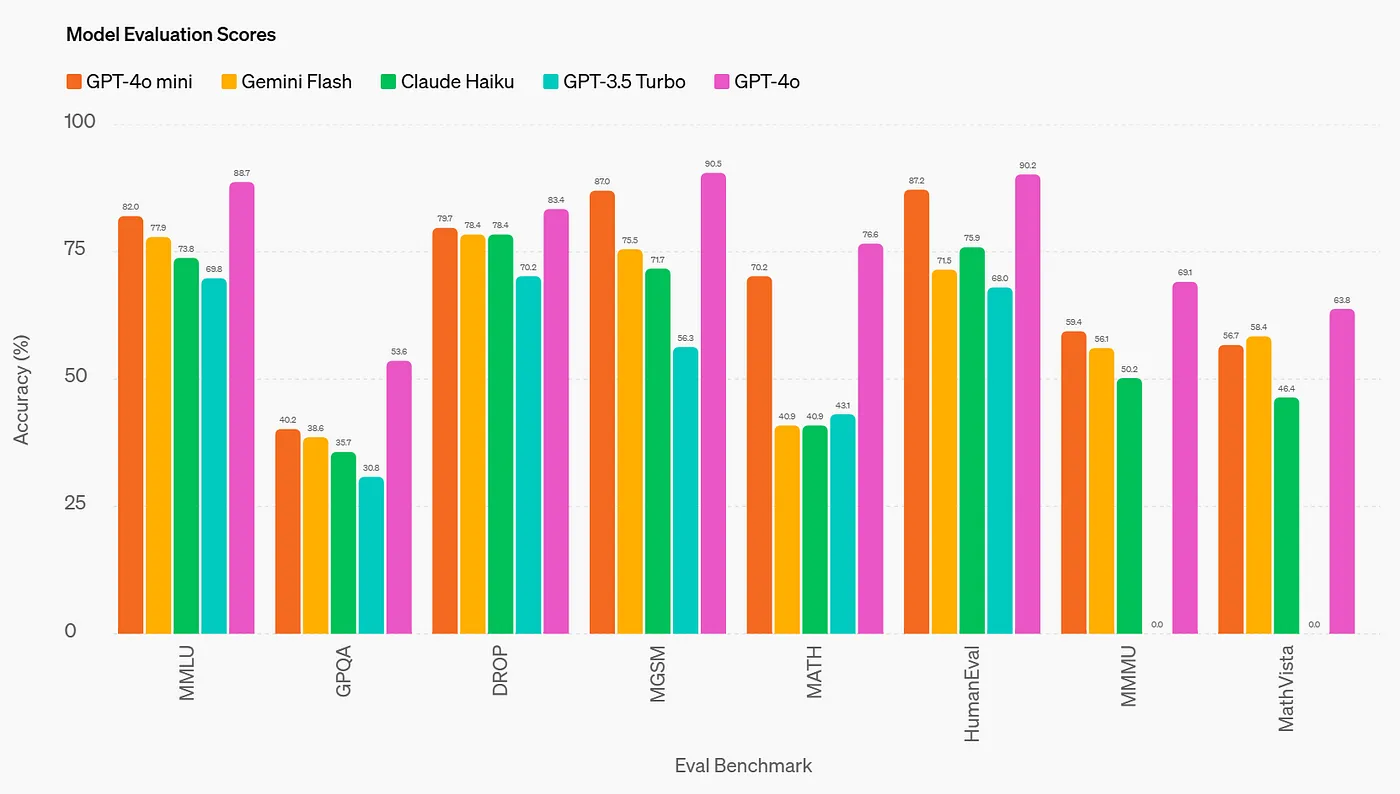Power of LLMs, SLMs, and Multimodal Models
Navigating the AI Landscape: Unveiling the Power of LLMs, SLMs, and Multimodal Models
Created Aug 13, 2024 - Last updated: Aug 13, 2024

Introduction
In the realm of artificial intelligence (AI), language models have revolutionized how machines understand and generate human language. Two prominent types of language models are Large Language Models (LLMs) and Small Language Models (SLMs). This blog explores their differences, use cases, and the exciting world of multimodal models.
Large Language Models (LLMs)
LLMs are characterized by their enormous size, typically involving billions of parameters. These models undergo extensive training on large datasets sourced from various origins, enabling them to learn complex patterns and relationships within language. Examples of LLMs include OpenAI’s GPT-3 and Google’s BERT.
Key Features of LLMs:
- High Accuracy: LLMs can generate highly accurate and contextually fitting responses.
- Versatility: They are capable of performing a wide range of tasks, including language translation, text generation, summarization, and question answering.
- Generative Prowess: LLMs can craft coherent and contextually appropriate text, making them invaluable for applications requiring natural language understanding.
Use Cases for LLMs:
- Content Creation: Generating articles, blog posts, and creative writing.
- Customer Support: Automating responses to customer inquiries.
- Language Translation: Translating text between different languages with high accuracy.
- Programming Assistance: Helping developers write and debug code.
Step-by-Step Guide to Deploy GPT-4o (LLM) on Azure OpenAI Service
Prerequisites:
- Azure Account: Ensure you have an active Azure subscription. If not, you can sign up for a free account.
- Azure OpenAI Access: Apply for access to Azure OpenAI Service if you haven’t already.
Step 1: Set Up Azure OpenAI Service
- Log in to Azure Portal: Go to the Azure Portal.
- Create a Resource: Click on “Create a resource” and search for “Azure OpenAI”.
- Create Azure OpenAI Service: Click on “Create” and fill in the necessary details such as resource group, region, and name. Click “Review + create” and then “Create”.
Step 2: Deploy GPT-4o Model
- Navigate to Azure OpenAI Studio: Once the service is created, go to the Azure OpenAI Studio.
- Create a Deployment: Click on “Deployments” and then “Create new deployment”.
- Select Model: Choose GPT-4o from the list of available models.
- Configure Deployment: Provide a name for your deployment and configure any additional settings as needed. Click “Create”.
Step 3: Access the Model via API
- Get API Key: Navigate to the “Keys and Endpoint” section in your Azure OpenAI resource to get your API key and endpoint URL.
- Sample Code: Use the following Python code to interact with the GPT-4o model.
import openai
# Set up your API key and endpoint
openai.api_key = "YOUR_API_KEY"
openai.api_base = "YOUR_ENDPOINT_URL"
# Define the prompt
prompt = "Write a short story about a brave knight."
# Make a request to the GPT-4o model
response = openai.Completion.create(
engine="gpt-4o",
prompt=prompt,
max_tokens=150
)
# Print the response
print(response.choices[0].text.strip())
Step 4: Test and Iterate
- Test the Model: Run the sample code to test the model’s response.
- Refine Prompts: Adjust your prompts and settings to fine-tune the model’s output according to your needs.
Small Language Models (SLMs)
SLMs, on the other hand, are more compact versions of LLMs. They are trained on less data with fewer parameters, making them lightweight and resource-efficient.
Key Features of SLMs:
- Efficiency: SLMs require less computational power and memory.
- Cost-Effective: They are more affordable to deploy and maintain.
- Specialized Applications: SLMs are suitable for specific tasks where large-scale models are unnecessary.
Use Cases for SLMs:
- Embedded Systems: Running on devices with limited computational resources.
- Real-Time Applications: Providing quick responses in applications like chatbots and virtual assistants.
- Domain-Specific Tasks: Performing specialized tasks in niche areas.
Vision and Text Capabilities: The model can process and analyze visual data, generating comprehensive text outputs, making it versatile for various tasks.
Flexible Pricing: GPT-4o mini offers regional and global pricing options, ensuring cost-efficiency tailored to specific regional needs.
Fine-Tuning: Fine-tuning capabilities are in public preview, allowing customers to tailor the model to their specific use cases, with enhanced safety checks in place.

Choosing Between LLMs and SLMs
The choice between LLMs and SLMs depends on the specific requirements of the application. LLMs are ideal for tasks requiring high accuracy and versatility, while SLMs are suitable for resource-constrained environments and specialized applications.
Multimodal Models
Multimodal models are advanced AI systems that process various types of data, such as text, images, audio, and video, simultaneously. These models provide a comprehensive understanding of complex, multi-modal information.
Benefits of Multimodal Models:
- Contextual Comprehension: They can understand context better by integrating information from multiple sources.
- Natural Interaction: Enhancing human-computer interaction by processing diverse data types.
- Accuracy Enhancement: Improving the accuracy of predictions and insights by combining different data modalities.
Examples of Multimodal Models:
- Visual Question Answering: Combining text and image data to answer questions about images.
- AI Writing Tools: Generating content based on text prompts and visual inputs.
- Virtual Assistants: Using audio, text, and visual data to provide more personalized and accurate responses.
Ensuring Safety in GPT-4o Mini:
Safety is a cornerstone of our AI models, embedded from the very beginning and reinforced throughout the development process. During pre-training, we meticulously filter out undesirable information, such as hate speech, adult content, personal data aggregators, and spam. Post-training, we enhance the model’s alignment with our policies using techniques like reinforcement learning with human feedback (RLHF), ensuring the accuracy and reliability of the model’s responses.
GPT-4o Mini inherits the robust safety measures of GPT-4o. These measures have been rigorously evaluated through both automated and human assessments, adhering to our Preparedness Framework and voluntary commitments. Over 70 external experts in fields such as social psychology and misinformation have tested GPT-4o to identify potential risks. The insights gained have been instrumental in enhancing the safety of both GPT-4o and GPT-4o Mini. Detailed findings will be shared in the upcoming GPT-4o system card and Preparedness scorecard.
Building on these insights, we have further improved the safety of GPT-4o Mini using innovative techniques informed by our research. Notably, GPT-4o Mini in the API is the first model to implement our instruction hierarchy method. This method enhances the model’s resistance to jailbreaks, prompt injections, and system prompt extractions, making its responses more reliable and safer for large-scale applications.
We remain committed to monitoring the use of GPT-4o Mini and continuously improving its safety as new risks are identified.
Cost Considerations
LLMs generally come with higher costs due to their extensive training and computational requirements. SLMs, being more lightweight, are more cost-effective and easier to deploy in resource-constrained environments.
Conclusion
Both LLMs and SLMs have their unique strengths and use cases. The choice between them depends on the specific needs of the application. Additionally, multimodal models represent an exciting frontier in AI, offering enhanced capabilities and accuracy by integrating multiple data types. As AI continues to evolve, these models will play a crucial role in shaping the future of technology.
